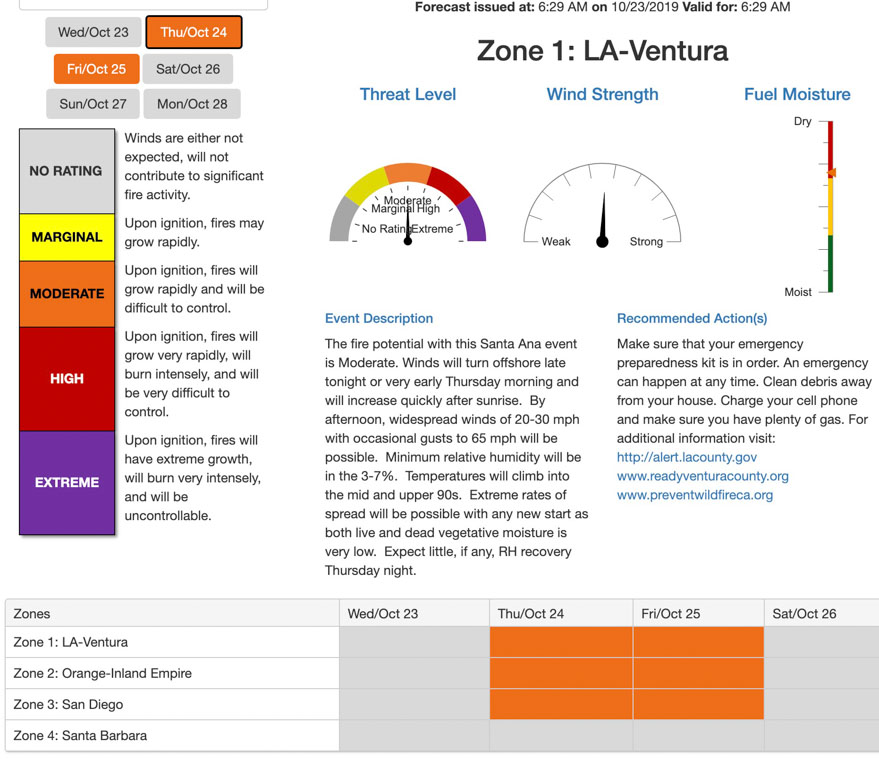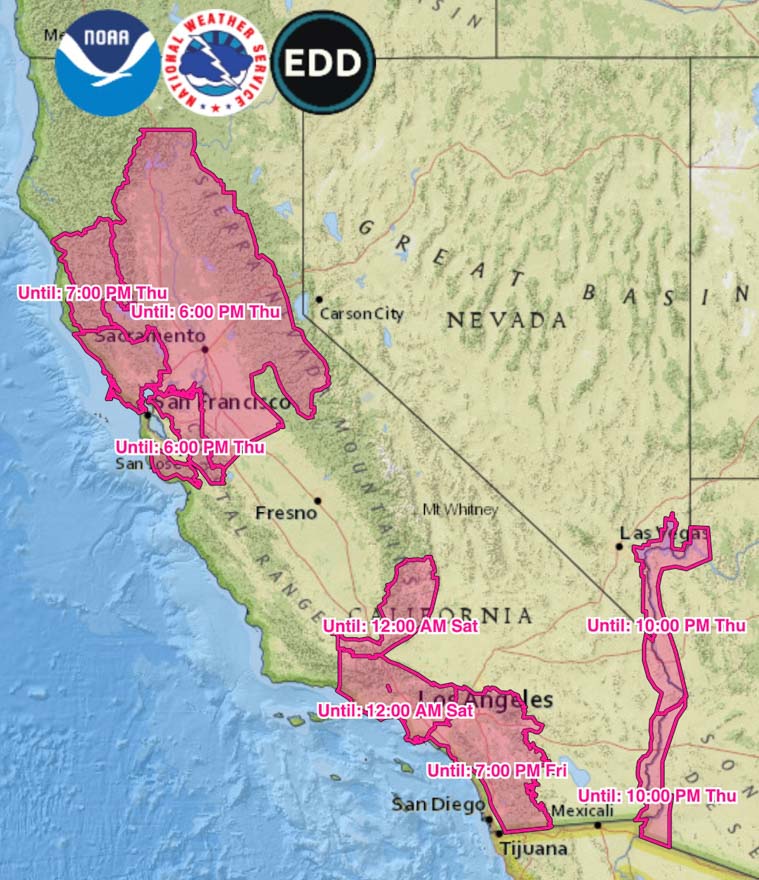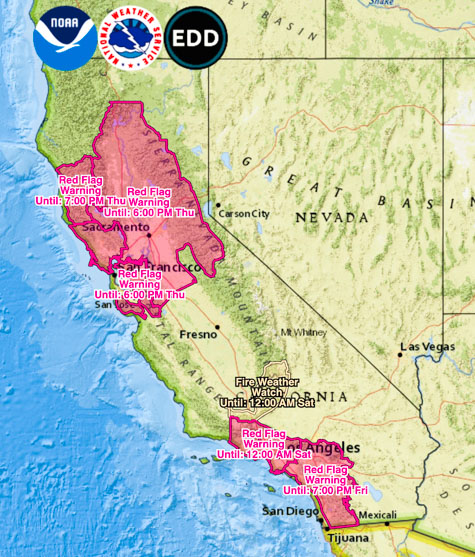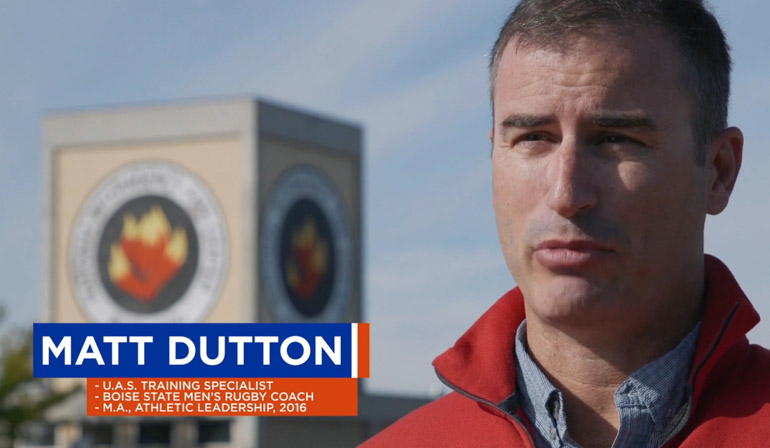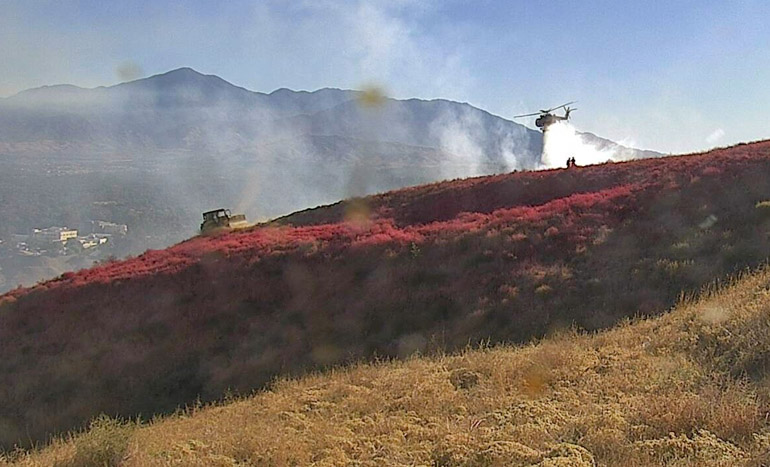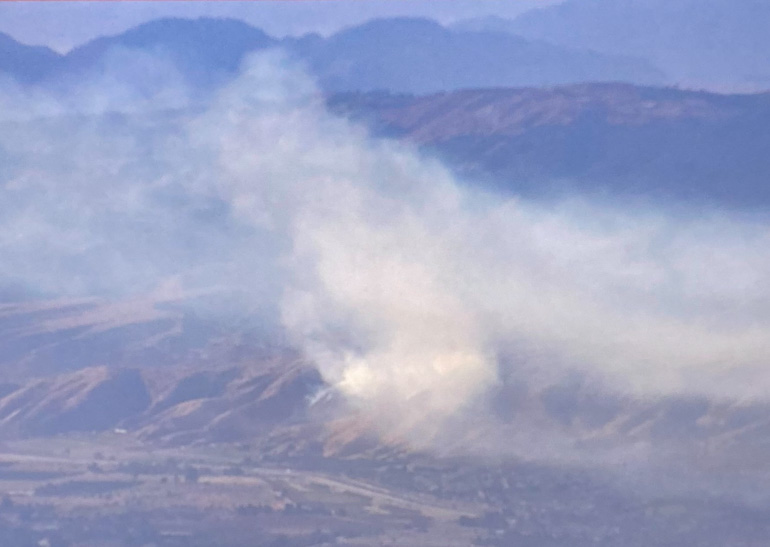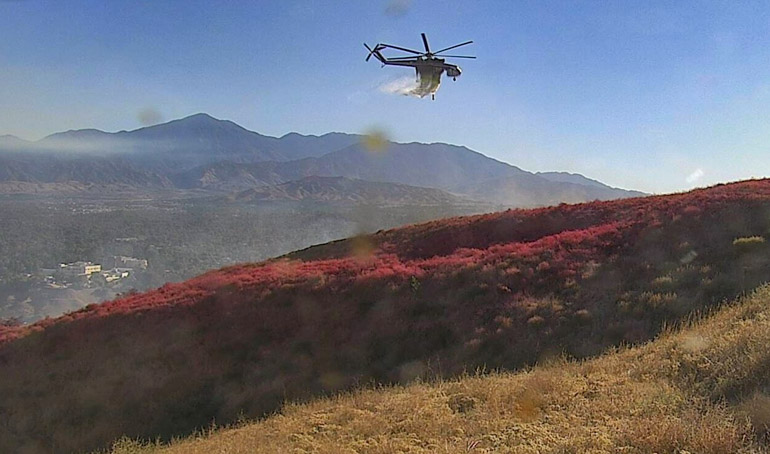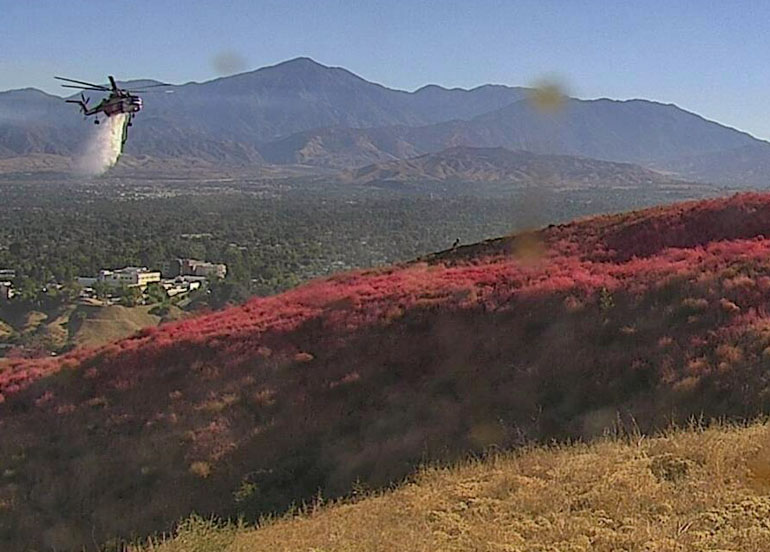UPDATED at 5:56 p.m. PDT October 25, 2019
The Kincade Fire was active Friday afternoon, and became more so after 3 p.m., sending up a very large column of smoke.
There are reports that during that period of enhanced activity Friday afternoon several firefighters and civilians took refuge in fire shelters that were deployed. Radio conversations indicated that it took place on Pine Flat Road on the east side of the fire. A number of ground and air ambulances were dispatched to the scene but apparently there were no injuries. This is all preliminary information and could change. It is not confirmed by CAL FIRE.
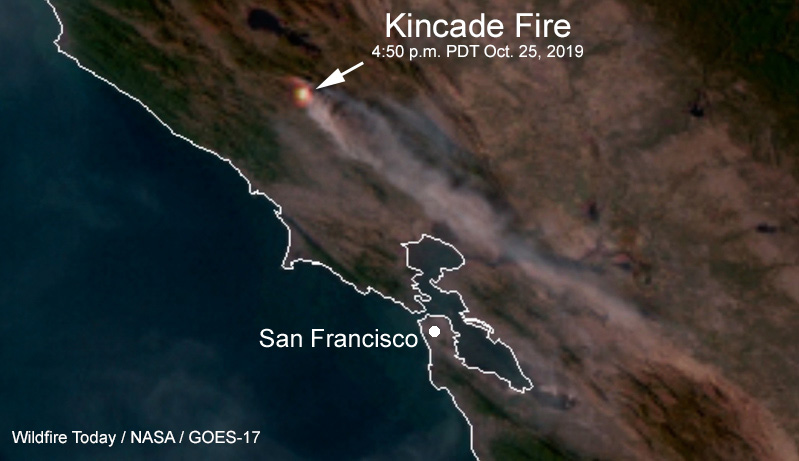
UPDATED at 11:26 a.m. PDT October 25, 2019
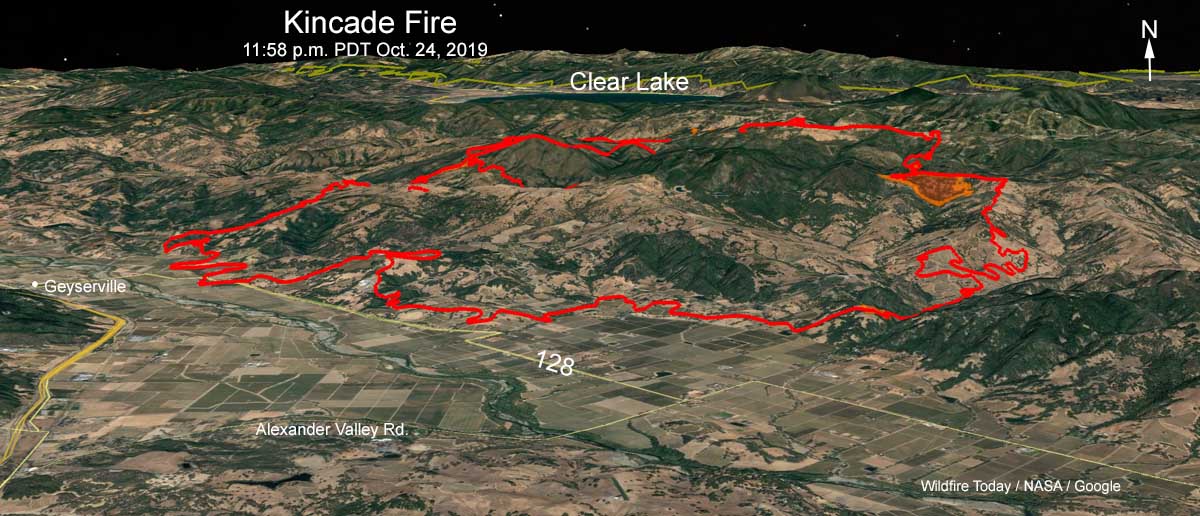
CAL FIRE reports that the Kincade Fire east of Geyserville in northern California has blackened 21,900 acres and destroyed 49 structures. About 735 structures are still threatened.
Evacuations have been ordered for about 2,000 people, including the entire town of Geyserville. All roads east of Highway 101 in the Geyserville area are closed.
From ABC7:
A CAL FIRE incident commander says the fire started near the Geysers Geothermal Plant, but they don’t know if the plant had anything to do with it. Firefighters also said they do not know if the PG&E power shutoff was in effect in the area at the time the blaze started.
According to a report filled by PG&E, they became aware of “Transmission level” outages on their Geysers line. On site CAL FIRE personnel brought to PG&E’s crew’s attention what appeared to be a broken jumper on the same tower.
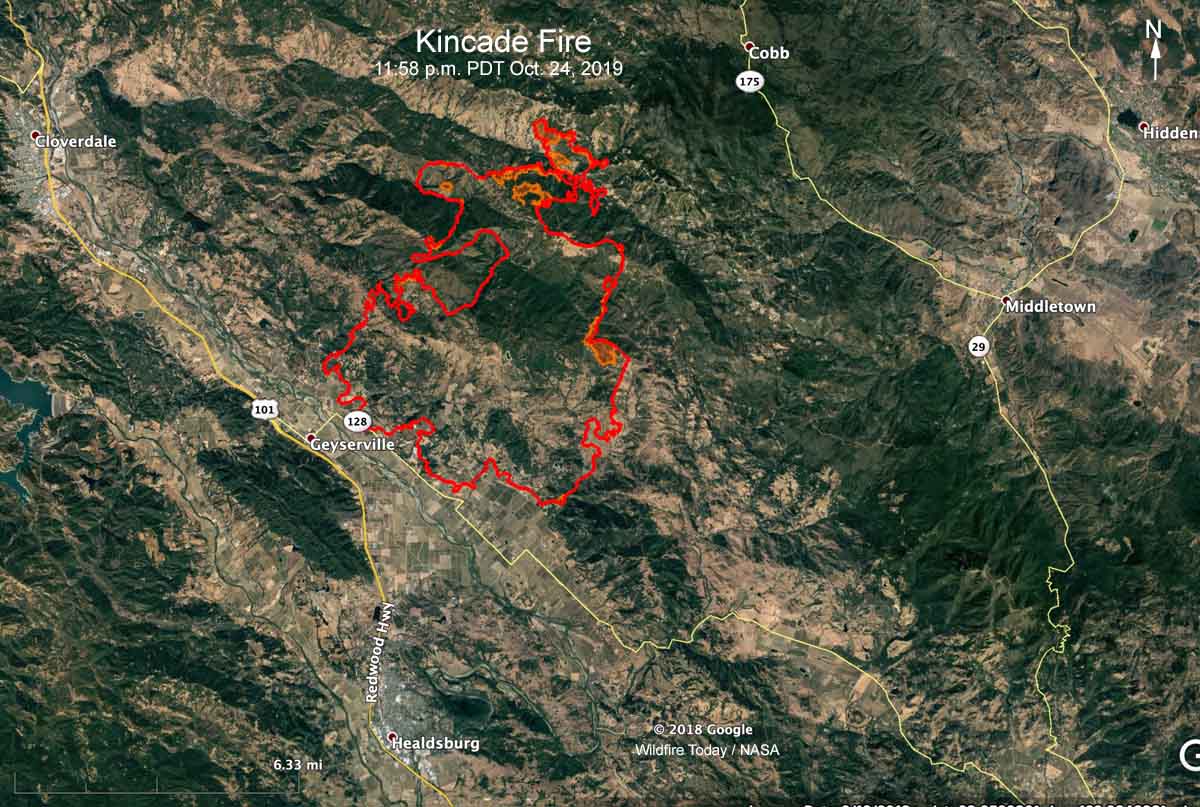
At least three large air tankers, a P2, BAe-146, and an MD87, are working the #KincadeFire in NoCal, plus at least one S-2 and multiple helicopters. Here’s a photo by an Alert Wildfire cam, taken at 10:44 a.m. today. pic.twitter.com/TZwpZOApUE
— Fire Aviation (@FireAviation) October 25, 2019
Resources assigned to the fire include 77 fire engines, 10 water tenders, 12 helicopters, 38 hand crews, and 32 dozers for a total of 1,283 personnel.
UPDATED at 11:14 a.m. PDT October 24, 2019
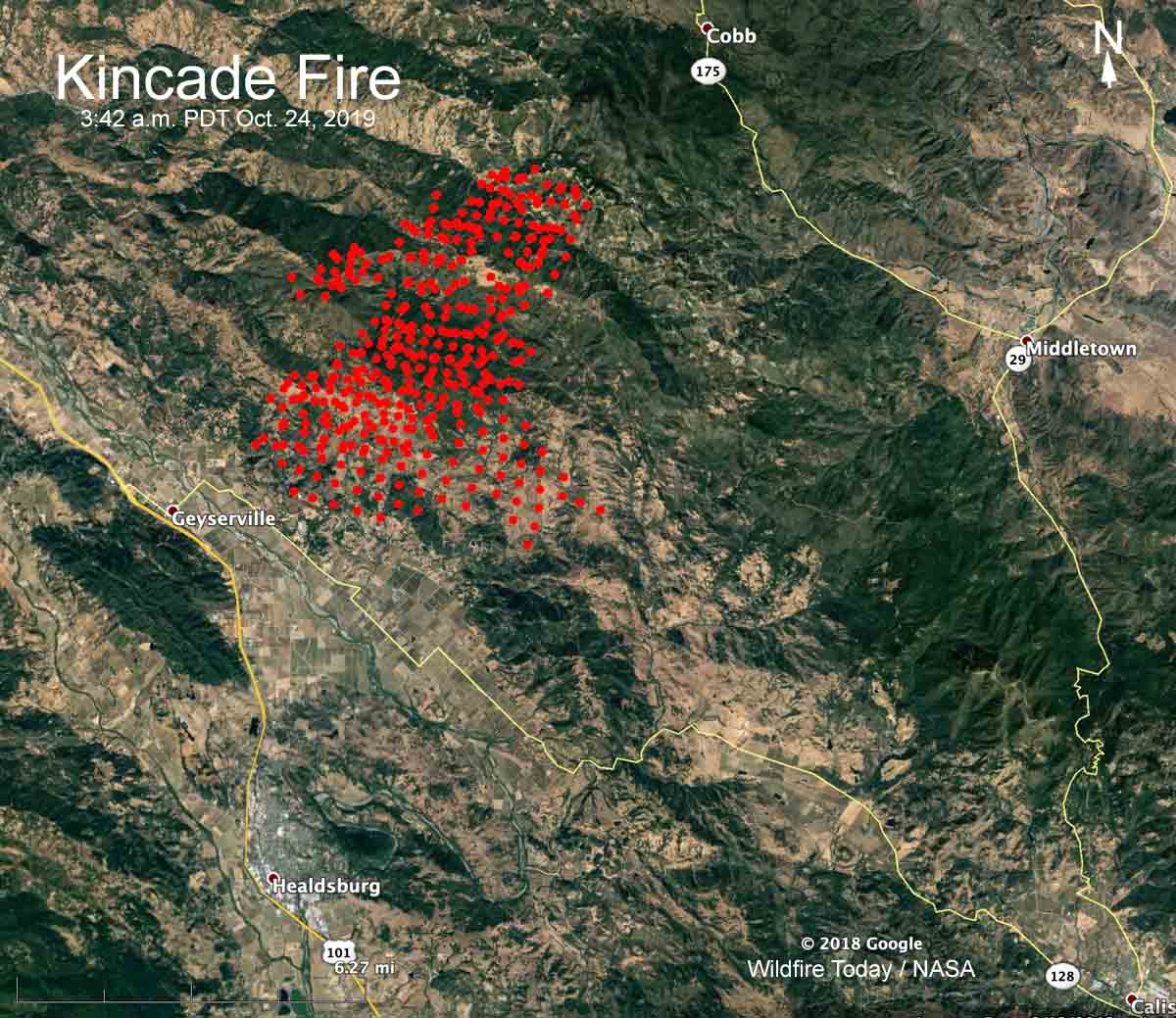
Weather forecasters expect the strong north-northeast winds pushing the Kincade Fire to slowly decrease by midday and through the afternoon. Afternoon highs will be near record levels in the low 90s. Humidity values will remain critically low in the single digits even with light offshore winds later this afternoon. North winds at 5 to 10 mph will continue Thursday night and Friday.
A stronger offshore wind event will arrive Saturday night into Sunday with damaging winds and critical fire weather conditions.
9:18 a.m. PDT October 24, 2019
The Kincade Fire, first reported at 9:27 Wednesday night northeast of Geyserville, California has forced the evacuation of the entire town with a population of about 862 people. At 4 a.m. Thursday CAL FIRE estimated the fire had burned about 10,000 acres.
The fire is 63 miles north of San Francisco.
The rapidly spreading fire is being pushed by strong north-northeast winds with sustained speeds of 45 to 60 mph with a maximum gust of 76 mph at the Healdsburg Hills North weather station. Overnight the humidity has been in the low teens with temperatures around 70.
Some structures have burned but the number is unknown. The Press Democrat reported that spot fires were starting far ahead of the main fire:
Monte Rio Fire Chief Steve Baxman said an ember was thrown about a mile from the fire front onto a home off Red Winery Road that was destroyed.
The Sonoma County Sheriff sent an alert at 6:23 a.m. Thursday announcing the immediate evacuation of Geyserville, saying the Kincade Fire had crossed Highway 128 near Moody Lane and was heading west. Earlier homes were evacuated in several areas east of Geyserville. Evacuation centers were established at Healdsburg Community Center and Windsor High School.
There is a report that the fire started near one of the geothermal power plants.
The photos below were taken by the Alert Wildfire network at around 7:54 a.m. PDT October 24.
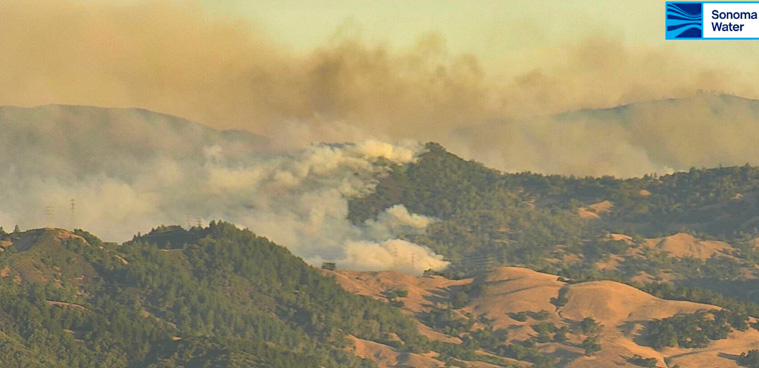


Not what we want to see, but inevitable. #KincadeFire burning right next to power lines. pic.twitter.com/1PDzLtLh0E
— Eric Shackelford (@ABC7Shack) October 24, 2019
The #KincadeFire is burning on both sides of Geysers Road and has already consumed over 10,000 acres. Homes are starting to burn along Red Winery Road. @GettyImagesNews pic.twitter.com/xWcts5xWIB
— Justin Sullivan (@sullyfoto) October 24, 2019
Losing structures, Red winery Road, #kincadefire @NorthBayNews pic.twitter.com/VdICjyxMdB
— Kent Porter (@kentphotos) October 24, 2019



